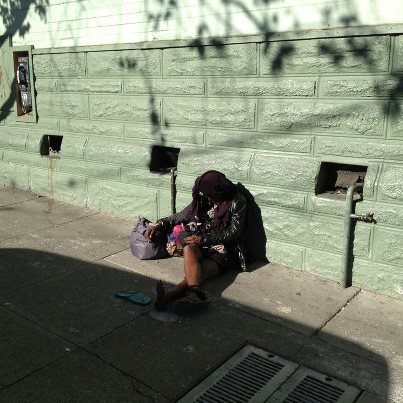Archive for December 2012

Filed 12/19/2012. 3:08am. The Amazing Democrat’s Editor’s Note: Twice in two weeks I failed to get assistance when required for the homeless. Tonight only fifteen feet from my door (and I wish I could give that person a bed for the night but I can’t) a homeless person sleeps in a very cold San Francisco night on the pavement. So since 1.45am I have been trying assistance via the city’s 311 service for this person but the agency I was transferred to (which is meant to be on call twenty-fours a day) all I got was an answering machine, left a message to call me back no matter how late but so far nothing. Then called 311 again to tell them I haven’t no luck I was transferred to the San Francisco Police Department’s non-emergence number and I waiting outside for thirty minutes in the freezing cold with no success (unless they are out there now). It is frustrating that in one of the richest cities run by Democrats our services for the homeless in need is so dire. We are meeting with City Hall on January 9th, 2013 to discuss our ten point plan for the homeless. We know this is going to be a mammoth task and an uphill battle, but we are willing to take on this task as if we don’t try and fend and speak up for our homeless community especially in this weather, we the Democrats don’t deserve to be in power.
After Recession, More Young Adults Are Living on Street
By SUSAN SAULNY (The New York Times)
SEATTLE — Duane Taylor was studying the humanities in community college and living in his own place when he lost his job in a round of layoffs. Then he found, and lost, a second job. And a third.
Anna Wiley says she has spent the night at Roots, a young adult shelter in Seattle, instead of going home because her parents are also in dire straits.
Now, with what he calls “lowered standards” and a tenuous new position at a Jack in the Box restaurant, Mr. Taylor, 24, does not make enough to rent an apartment or share one. He sleeps on a mat in a homeless shelter, except when his sister lets him crash on her couch.
“At any time I could lose my job, my security,” said Mr. Taylor, explaining how he was always the last hired and the first fired. “I’d like to be able to support myself. That’s my only goal.”
Across the country, tens of thousands of underemployed and jobless young people, many with college credits or work histories, are struggling to house themselves in the wake of the recession, which has left workers between the ages of 18 and 24 with the highest unemployment rate of all adults.
Those who can move back home with their parents — the so-called boomerang set — are the lucky ones. But that is not an option for those whose families have been hit hard by the economy, including Mr. Taylor, whose mother is barely scraping by while working in a laundromat. Without a stable home address, they are an elusive group that mostly couch surfs or sleeps hidden away in cars or other private places, hoping to avoid the lasting stigma of public homelessness during what they hope will be a temporary predicament.
These young adults are the new face of a national homeless population, one that poverty experts and case workers say is growing. Yet the problem is mostly invisible. Most cities and states, focusing on homeless families, have not made special efforts to identify young adults, who tend to shy away from ordinary shelters out of fear of being victimized by an older, chronically homeless population. The unemployment rate and the number of young adults who cannot afford college “point to the fact there is a dramatic increase in homelessness” in that age group, said Barbara Poppe, the executive director of the United States Interagency Council on Homelessness.
The Obama administration has begun an initiative with nine communities, most of them big cities, to seek out those between 18 and 24 who are without a consistent home address. New York, Houston, Los Angeles, Cleveland and Boston are among the cities included in the effort.
“One of our first approaches is getting a more confident estimate,” said Ms. Poppe, whose agency is coordinating the initiative.
Those who provide services to the poor in many cities say the economic recovery has not relieved the problem. “Years ago, you didn’t see what looked like people of college age sitting and waiting to talk to a crisis worker because they are homeless on the street,” said Andrae Bailey, the executive director of the Community Food and Outreach Center, one of the largest charitable organizations in Florida. “Now that’s a normal thing.”
Los Angeles first attempted a count of young adults living on the street in 2011. It found 3,600, but the city had shelter capacity for only 17 percent of them.
“The rest are left to their own devices,” said Michael Arnold, the executive director of the Los Angeles Homeless Services Authority. “And when you start adding in those who are couch surfing and staying with friends, that number increases exponentially.”
Boston also attempted counts in 2010 and 2011. The homeless young adult population seeking shelter grew 3 percentage points to 12 percent of the 6,000 homeless people served over that period.
“It’s a significant enough jump to know that it’s also just the tip of the iceberg,” said Jim Greene, director of emergency shelters for the Boston Public Health Commission.
In Washington, Lance Fuller, a 26-year-old with a degree in journalism, spent the end of last month packing up a one-bedroom apartment he can no longer afford after being laid off. Mr. Fuller said he had been unable to keep a job for more than eight months since graduating from the University of Florida in 2010.
“Thankfully, I have a girlfriend who is willing to let me stay with her until I get back on my feet again,” said Mr. Fuller, who writes a blog, Voices of a Lost Generation. “It’s really hard for people in my generation not to feel completely defeated by this economy.”
Mr. Taylor, the fast-food worker in Seattle, said he felt lucky when he could find a coveted space at Roots, a shelter for young adults in a church basement. Such shelters are rare.
For generations, services for the homeless were directed to two groups: dependent children and older people. There was scant attention focused on what experts now call “transitional age youth” — young adults whose needs are distinct.
“I see them coming back day after day, more defeated, more tired out, wondering, ‘When will it be my turn?’ ” said Kristine Cunningham, executive director of Roots. “And it’s heartbreaking. This is the age when you want to show the world you have value.”
They need more than just clean clothes and shelter to move into a secure adulthood, experts say. “They want a way out,” said Ms. Poppe, whose agency is also gathering evidence on what kinds of programs and outreach work best. “They want an opportunity to develop skills so they are marketable in the long term.”
“A more individualized approach seems to work,” she added.
But two obstacles stand in the way: young adults, eager for independence, are reluctant to admit that they need help and housing. And shelters designed with young adults in mind — those with career and trauma counseling, and education and training programs — are usually small.
Volunteers set up mattresses at the Roots youth shelter in Seattle in November. The shelter is expanding to 45 beds from 35.
Roots holds only 35 people, and a nightly lottery decides who gets a spot, which includes meals, laundry services and counseling. It is expanding to 45 beds.
Anna Wiley, 20, and her boyfriend, Bobby Jollineau, 24, spent several nights at Roots two weeks ago, but were unable to get in one night in November. “We ended up sleeping outside,” Mr. Jollineau said. “I have a sleeping pad and a really warm sleeping bag. There’s a couple of nooks and crannies that are safe around here, but you have to be careful. It can make for a rough night.”
Asked whether she could go to her parents’ home, Ms. Wiley said that her father is unemployed and that her mother works in a deli, making about as little as she does.
“I don’t like relying on other people too much, anyway,” she said.
Across town, Roman Tano, 20, woke up recently at YouthCare’s James W. Ray Orion Center, another shelter for young adults that offers training programs. In October, its capacity grew to 20 beds from 15.
Two months ago, Mr. Tano gave up an apartment in his native Dallas after losing his job. He sold his Toyota and sought opportunities in the Pacific Northwest.
He rented a room and set out with his résumé (expertise: fund-raising). But when his $2,000 in savings withered to nothing, “I ended up sleeping on the street for the first time in my life,” he said. “I just kind of had to walk around and try to stay warm.”
Mr. Tano found the YouthCare shelter online, and has been staying there for a month. He has a new job as a canvasser for an environmental organization.
“Coming into it, I was, like, completely out of my element,” he said of YouthCare. “But in the time I’ve been here, it’s a pretty diverse group of people. There are a lot of people just trying to work to get out of this.”
“After I get my paycheck,” he said brightly, “I should be on my way.”
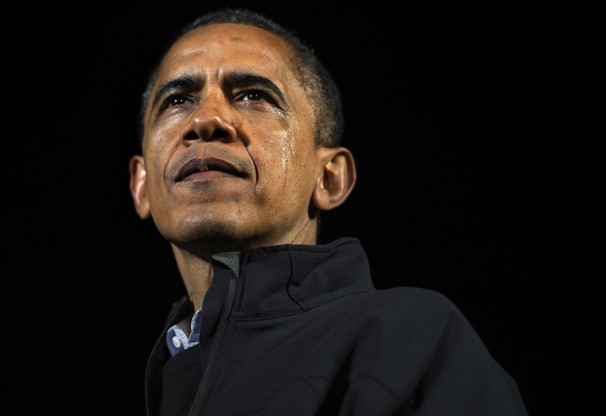
By Josh Hicks (The Washington Post)
President Obama hasn’t officially secured a second term in the White House. Technically, that won’t happen until the electoral college casts its ballots Monday — presumably in favor of the winner for each state.
Even then, Congress has to formally declare Obama the victor after counting the electoral votes on Jan. 6. Such is the nature of an often poorly understood — and some argue arcane — system for electing the U.S. president. Essentially, Nov. 6 marked the beginning, not the end, of the process for this cycle.
No one is expecting anything but a routine process Monday for Obama, who decisively won the popular vote last month, earning 332 pledged electoral votes to Mitt Romney’s 206.
There have been some electoral defectors in the past, but they’ve been rare.
“Those instances are very isolated,” said Miriam Vincent, an attorney for the Office of the Federal Register, which records and archives the electoral votes. “That’s not to say it won’t happen this year, but it’s unlikely, based on history.”
There were those who predicted a tighter finish on Nov. 6, and some news media speculated on the possibility of some version of election year 2000, the last time the electoral college took center stage. President George W. Bush lost the popular vote but won the electoral college after a historic — and controversial — Supreme Court decision.
The Constitution provides little in the way of mandating how the electoral college should work. It simply determines that each state has one elector for each of its senators and representatives, meaning no state has fewer than three votes.
Federal law requires state electors to meet in their respective state capitals every four years to cast their votes for president and vice president on the Monday after the second Wednesday of December. Otherwise, states largely set their own rules. In most states, an equal number of electors pledge themselves to each candidate, and the popular vote dictates which team of electors casts its votes.
But not all states require their electors to vote according to their initial pledges. And sometimes, electoral voters go their own way.
President Gerald Ford won Washington state in 1976, but Republican elector Mike Padden spent his vote on Ronald Reagan, who wasn’t even the GOP nominee that year.
In 2000, Democratic elector Barbara Lett-Simmons of the District of Columbia cast a blank ballot to protest the lack of congressional representation for the capital. (D.C. residents had no say in presidential elections before the 23rd Amendment, which granted the city three electoral votes, starting in 1964.)
Nine electors are known to have defected from their pledges since 1948. Some states have passed laws subjecting such “faithless electors” to fines.
The nation’s founders considered giving Congress the authority to elect the president, but they decided that option would make the selection dependent upon legislative politics — thus defying the notion of checks and balances. Still, the founders feared the type of absolute democracy that led to the Reign of Terror in France. As a compromise, they settled on the electoral college, which allows the states to pick the president.
“They didn’t want mass hysteria or mob rule,” Vincent said. “The electoral college was set up with the idea that electors would not be influenced by irrelevancies or propaganda.”
The electoral college was also supposed to level the playing field for states with smaller populations, providing them with greater say in presidential elections.
And as the country was reminded in 2000, a candidate doesn’t have to win the popular vote to win. In addition to Bush, three others made it to the White House without the popular vote: John Quincy Adams over Andrew Jackson in 1824; Rutherford B. Hayes over Samuel J. Tilden in 1876; and Benjamin Harrison over Grover Cleveland in 1888.
The nonprofit group National Popular Vote Inc. has convinced eight states and the District of Columbia to sign an interstate compact that would undermine the electoral college and prevent future second-place finishers from becoming president.
The agreement, which the group first proposed in 2006, requires electors to cast their votes for the winner of the popular vote regardless of who wins their states, but only if the participating states represent a combined 270 electoral votes. That’s the amount necessary to win a presidential election. So far, the member states make up 132 electoral votes.
“We pick up a state or two every year, and we just work away at it,” said National Popular Vote chairman John Koza. “We think every vote in every state should be relevant in every presidential election.”
Supporters might find an unintended consequence if they achieve their goal: eliminating the chance of repeating awkward moments like the one in 2000.
After the Supreme Court ended Florida’s chad-drama recount, it was Al Gore — presiding over Congress’s formal vote-counting session as vice president — who had to declare Bush the official winner.
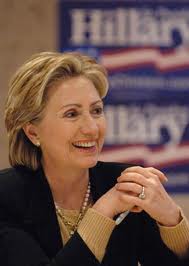
Why Hillary Clinton Would Be Strong in 2016 (It’s Not Her Favorability Ratings)
By NATE SILVER (The New York Times)
Let’s start by stating the obvious: Hillary Rodham Clinton would be a formidable presidential candidate in 2016.
Mrs. Clinton’s credentials as secretary of state, as a United States senator and as a politically engaged first lady would be hard for any of her Democratic or Republican rivals to match. She would have little trouble raising funds or garnering support from the Democratic officials, and she might even come close to clearing the Democratic field of serious opposition.
Mrs. Clinton made some tactical errors during the 2008 campaign — particularly, in her staff’s failure to understand the importance of contesting caucus states. But she improved considerably as a candidate over the course of the long primary, and the experience she gained would undoubtedly help her if she were to run again.
But if Mrs. Clinton runs for president in 2016, one thing is almost certain: she won’t be as popular as she is right now. Recent polls show that about 65 percent of Americans take a favorable view of Mrs. Clinton, while only about 30 percent have a negative one. Those are remarkably high numbers for a politician in an era when many public officials are distrusted or disliked.
But part of the reason for Mrs. Clinton’s high numbers is that, as secretary of state, she has remained largely above the partisan fray that characterizes elections and fights over domestic policy.
Over the course of her long career, the public’s views of Mrs. Clinton have shifted along with her public role. When she has been actively engaged in the hand-to-hand combat that characterizes election campaigns and battles in Congress, her favorability ratings have taken a hit, only to recover later.
Mrs. Clinton might be the most polled about figure American in history, other than those who have actually become president. Between the PollingReport.com database and other publicly available polling archives, I was able to identify about 500 high-quality telephone surveys that tested her favorability ratings with the public.
In the chart below, I’ve taken a moving average of Mrs. Clinton’s favorable and unfavorable ratings dating back to 1992. (The average is based on the 10 surveys that were conducted closest to the given date). The chart also highlights some of the most important moments of Mrs. Clinton’s career.
Mrs. Clinton, like her husband, began the 1992 campaign as a relatively unknown figure, but grew more popular as the campaign wore on. By the time Bill Clinton was inaugurated in January, 1993, about 50 percent of Americans took a favorable view of Mrs. Clinton against 20 percent who had an unfavorable one.
But Mrs. Clinton took a far more active role in seeking to affect public policy than most first ladies. In September 1993, she appeared before Congressional committees in an effort to advance the health care bill that she and Mr. Clinton had helped to design. No longer subject to the deference that first ladies typically receive from politicians and from the news media — and associated with a health care bill that would soon die in Congress — Mrs. Clinton saw her unfavorable ratings rise sharply, increasing to about 35 percent.
Adding to the pressure was the Whitewater investigation. In April 1994, Mrs. Clinton gave an unusual news conference in an effort to respond to her critics. The next two years were among the most difficult periods in Mrs. Clinton’s career, with her favorable ratings often barely exceeding her unfavorable ones. During stretches of early 1996, more Americans viewed Mrs. Clinton negatively than positively.
The release of the Senate Whitewater committee’s report in June 1996, which largely lacked substantive proof of wrongdoing by Mr. or Mrs. Clinton, seemed to help relieve the strain on her popularity, with Mrs. Clinton’s favorability ratings increasing, and her unfavorable ratings declining, throughout 1997.
Another set of accusations, which would become the Monica Lewinsky scandal, would work to Mrs. Clinton’s benefit, with her favorability ratings reaching a new high of about 60 percent after the impeachment of Mr. Clinton by the House of Representatives.
But Mrs. Clinton’s favorability ratings declined sharply in early 1999, after she declared her interest in running for the United States Senate, again making herself an explicitly political figure. After a brief “bounce”in her favorability ratings following her election to the Senate from New York in November 2000, Mrs. Clinton’s image entered into a long period of relative stability, with her favorable ratings averaging just below 50 percent, and her unfavorable ratings just above 40 percent, for most of the next six years.
Mrs. Clinton’s popularity would come under further pressure when she pursued her next ambition, announcing her candidacy for the presidency in January 2007. Over much of the next 18 months, as she came under increasing scrutiny from Barack Obama and other Democrats along with Republicans, her favorable and unfavorable ratings ran even with one another at about 45 percent.
Her favorable ratings would rebound in the late stages of the Democratic campaign, climbing to about 50 percent at about the time she withdrew from the race on June 7, 2008. They continued to move upward throughout the rest of 2008.
Then Mrs. Clinton received a further boost after accepting the job as Mr. Obama’s secretary of state. Her favorability ratings have been stable — and strong — throughout most of Mr. Obama’s first term, with 60 or 65 percent of Americans taking a favorable view of her against 30 percent who have a negative one.
What is the moral of the story — other than that Mrs. Clinton has had a remarkably interesting political career?
The theme is that a politician’s favorability ratings are a function, to a large degree, of the extent to which the other political party, and perhaps also the news media, feels as though they have license to criticize her.
During her tenure as first lady, Mrs. Clinton’s favorability ratings were lower when she was more actively engaged in policy making, as she was during the negotiations on the health care bill. And her popularity came under more strain during the Whitewater allegations, in which she was implicated, than during the ones involving Ms. Lewinsky and Mr. Clinton.
There was also less benefit of the doubt afforded to Mrs. Clinton after she became a candidate for public office, and then an influential Democratic figure in the Senate. And her popularity especially suffered during the early stages of presidential campaign, when she came under intense scrutiny not only from Republicans, but also from her fellow Democrats.
The surge in Mrs. Clinton’s favorability ratings late in the 2008 campaign, although perhaps partly testifying to her steadily improving skills as a campaigner and to her new role as an underdog in the Democratic primary race, may also have reflected the fact that Republicans had less incentive to criticize her. Instead, they were trying to woo her supporters — or bolster her chances to prolong the Democratic nomination process.
Mrs. Clinton has been highly popular as secretary of state, but so were her predecessors during George W. Bush’s administration, Colin L. Powell and (to a slightly lesser extent) Condoleezza Rice.
A secretary of state is not necessarily above partisan criticism, but attacking a secretary of state can potentially backfire on the opposition party. As Mitt Romney discovered during the presidential campaign foreign affairs can present an unlevel playing field to the opposition party. The White House and the Department of State have a number of defenses that they can employ to shield themselves from criticism, from claiming that they are protecting the national interest, to accusing their opponents of being unpatriotic, to arguing that their opponents lack knowledge of the situation on the ground. The secretary of state, like the president, also enjoys the symbolic trappings of incumbency when she conducts diplomatic affairs.
Were Mrs. Clinton to run for president again, she would lose most of these advantages. Republicans would begin to criticize her, delicately at first, and then more expressly as the election drew nearer.
None of this is to argue that Mrs. Clinton would not have some unique strengths as a candidate. For all the reasons I mentioned at the top, she seems like Democrats’ best bet, perhaps by some margin, to extend their winning streak to three or more terms in the White House. If she ran even a point or two stronger than a “generic” Democrat, the odds would shift meaningfully in her favor, holding other circumstances equal.
But elections in which no incumbent is running are usually fairly close. And in an era of intense partisanship, there is a relatively low ceiling (and perhaps also a relatively high floor) on the favorability ratings that any politician can have in the most active stages of a presidential campaign.
Perhaps Mrs. Clinton’s most impressive attribute is her ability to withstand criticism — and often emerge the stronger from it. If she runs for president again, she will surely receive plenty of it.
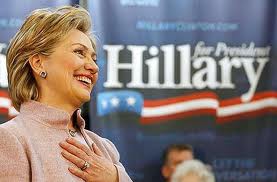
James Carville: ’90 percent’ of Democrats want Hillary Clinton to run for president
by Sean Sullivan (The Washington Post)
Democrats overwhelmingly want Secretary of State Hillary Rodham Clinton to run for president in 2016, former Clinton adviser James Carville said on Sunday.
“I don’t know what she’s going to do, but I do know this: The Democrats want her to run,” Carville a friend of both Bill and Hillary Clinton said on ABC’s “This Week With George Stephanopoulos.” And I don’t just mean a lot of Democrats. I mean a whole lot of Democrats, like 90 percent across the country. We just don’t — we just want to win. We think she’s the best person…. And that’s across the board.”
Clinton, who has said she plans to step down next year as the nation’s chief diplomat, will do so in very good political shape. According to a recent Washington Post-ABC News poll, two-in-three Americans said they hold a favorable impression of Clinton, while 57 percent of Americans say they would back a 2016 Clinton presidential candidacy.
“Every Democrat I know says, “God, I hope she runs. We don’t need a primary. Let’s just go to post with this thing. We don’t want to fight with anybody over anything,’” Carville said.
Mary Matalin, a Republican strategist and Carville’s wife, rejected the notion that Clinton would instantly clear the Democratic field.
“I love Hillary,” countered Matalin, who appeared on the same program. “I wish she would run. But it defies human nature to think that Democrats, even though they are redistributionist and utopians, would not be competitive, that [Sen. Mark] Warner or all these other Democrats who’ve been waiting in the wings are going to have a dynasty, since Democrats are always complaining about these dynasties, they’re going to have another Clinton step up, and everyone’s going to go, yeah, step back? I don’t think so.”
Republican strategist Matthew Dowd chimed in: “The whole race in 2016 right now pivots off of her. I think that, whether or not other Democrats run, it’s all going to pivot off of her. And even the Republicans to a degree are going to pivot off what she does.”
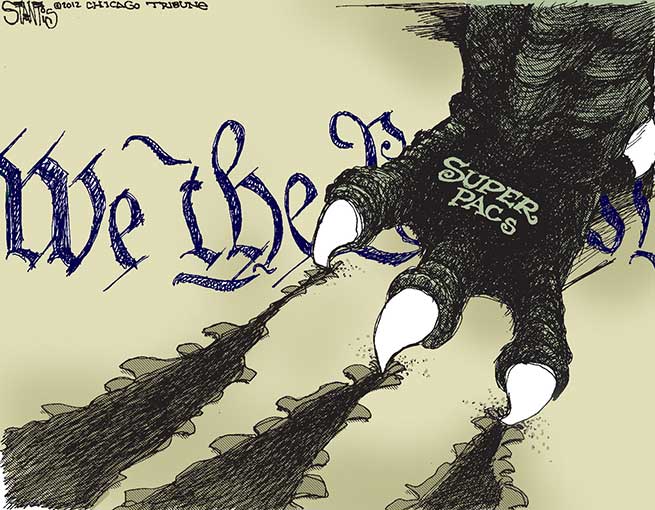
We thank you all for the comments made and certainly we will not make any excuses tonight but the last two to three weeks before election our time was placed elsewhere and we tried to maintain our social media to our readers to the best of our ability as we know how important our blog and our Facebook is to you. We apologize to you our readers if our standard wasn’t maintained during the last few weeks of the election. In saying that we are returning, be it at a much slower pace for the moment and we have been asked by the powers to be to maintain our presence, however we will not remain silent (as we have never done) on issues that are uncomfortable even for the Democratic Party and the President himself. Now the dust has settle with the Presidential election and we know they are so many important issues and crisis the President is currently dealing with, we cannot just simply sweep under the carpet the billions of dollars wasted in this last election by the SUPER PACS. Finance that could of funded so many of our cities homeless programs which are now under threat by Congress as we speak. Amazing Democrats please don’t push this aside until 2016, we need to win again in 2016 and we tonight we are calling on the Secretary of State Ms. Hillary Clinton to come forward in the New Year and inform us that she will be our Presidential candidate for 2016 (main stream media you have our permission to publish this). Keep focused and stay tuned for more in the near future. Thank you all for your kind comments, emails and support, it was that, that kept us going late into the early hours of all those many mornings to keep our social media current and up to date for the Amazing Democrats. Thank you so much and Happy Holidays to you and your family! Stay tuned.
“This woman (maybe homeless) was unconscious and lying in the direct heat of the sun. I do it by the book and call 311 and I am transferred to an SFPD captain. Thirty minutes later she is still there and nothing? So we try to wake her up, give her water and money for food but she still needs to be checked out and said rightly was “what is wrong with us Democrats running this city and Country?”. “Our beloved President visits and he gets 150 Police cars and motorcycles to protect him and we can’t get one for a homeless person”. What could I say? We live in the richest Country in the world and we can’t look after a few homeless people? Enough said…for the moment”.






